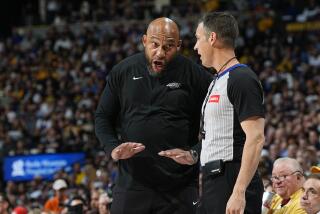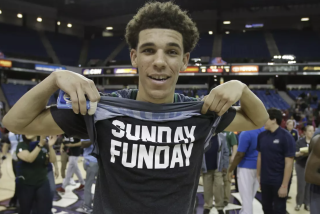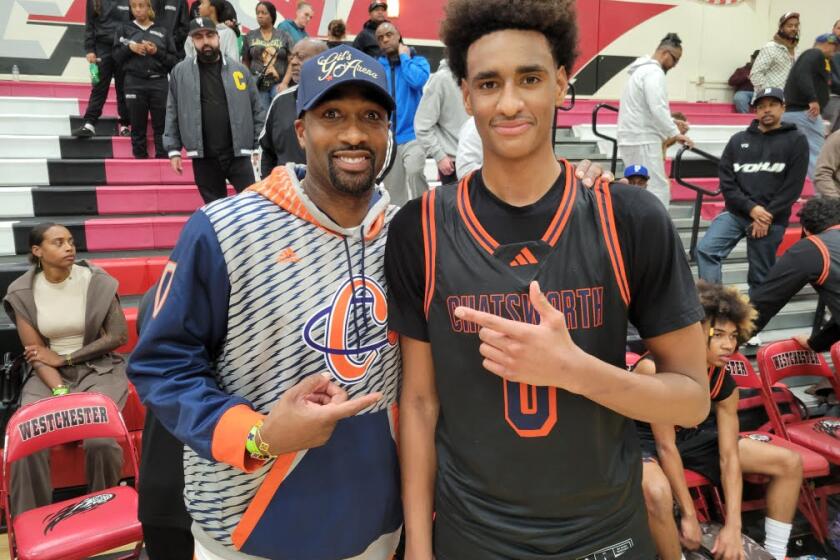Boys’ Basketball Becomes Matter of Time
Proponents say it’s about time.
Detractors argue that doesn’t make it right.
For the first time, a shot clock is being used statewide in high school boys’ basketball games this season.
The NBA was the first to implement a shot clock in the mid-1950s. A 30-second clock was adopted in 1971 in women’s college basketball. High school girls’ basketball followed suit in 1976. The NCAA approved a 45-second clock for men in 1985. In 1993, the men’s clock was reduced to 35 seconds.
It took a while for high school boys to catch up.
In February, the California Interscholastic Federation council passed--by majority vote of all 10 sections--a proposal to implement a 35-second shot clock, making California the first state to use a clock in all divisions.
Yet, for all the debating in the weeks preceding the vote, the clock appears to have made little impact in the first two weeks of the season.
“I don’t see any difference in the game,” said Birmingham Coach Al Bennett, who remains opposed to using a clock.
Bennett, whose team once went to a four-corner stall for 7 1/2 minutes in a game, feels a clock limits strategy.
He is not alone.
Several other coaches in the region contend a clock takes away the ability of less-talented teams from slowing down the game against athletic opponents who favor an up-tempo style.
Since more athletic teams already had an edge, some coaches wonder, “Why did we need a 35-second clock?”
Conversely, coaches who prefer a faster pace haven’t had to change their style.
Asked how the shot clock has affected his team’s strategy, Canoga Park Coach Ralph Turner replied, “What clock?”
Sylmar Coach Bort Escoto feels the same.
“I haven’t even mentioned it [to my players] at all,” Escoto said.
Not all coaches favoring an up-tempo style have ignored the change.
“We’ve practiced with it and we’ve experimented with it,” Chatsworth Coach Fluke Fluker said. “We’re aware that we have to get into our offense a little sooner.”
Many teams are still adjusting to playing with a clock.
“I can think of only a couple of situations [against Granada Hills] where we took a shot we didn’t want to take,” Palmdale Coach Garry Phelps said.
Against Granada Hills, the clock may have played into Palmdale’s hands. Granada Hills led by three with about two minutes left in overtime when Phelps realized Palmdale would have plenty of chances to catch up.
“I thought, well at least we don’t have to go out and foul somebody, because we had the shot clock,” he said.
Palmdale got the ball back several times and outscored Granada Hills, 13-4, to win, 93-87.
But Phelps, who considers himself a conservative coach, doesn’t count himself among advocates of the clock. Like other coaches, though, he has learned to go with the flow.
“I’ll probably get used to it,” he said, “just like I got used to the three-pointer.”
(BEGIN TEXT OF INFOBOX / INFOGRAPHIC)
Shot Selection
A look at the evolution of the shot clock:
*--*
Level Seconds Year NBA 24 1954 College Women 30 1971 High School Girls 30 1976 College Men 45 1985 College Men (change) 35 1993 High School Boys 35 1997
*--*
More to Read
Get our high school sports newsletter
Prep Rally is devoted to the SoCal high school sports experience, bringing you scores, stories and a behind-the-scenes look at what makes prep sports so popular.
You may occasionally receive promotional content from the Los Angeles Times.






